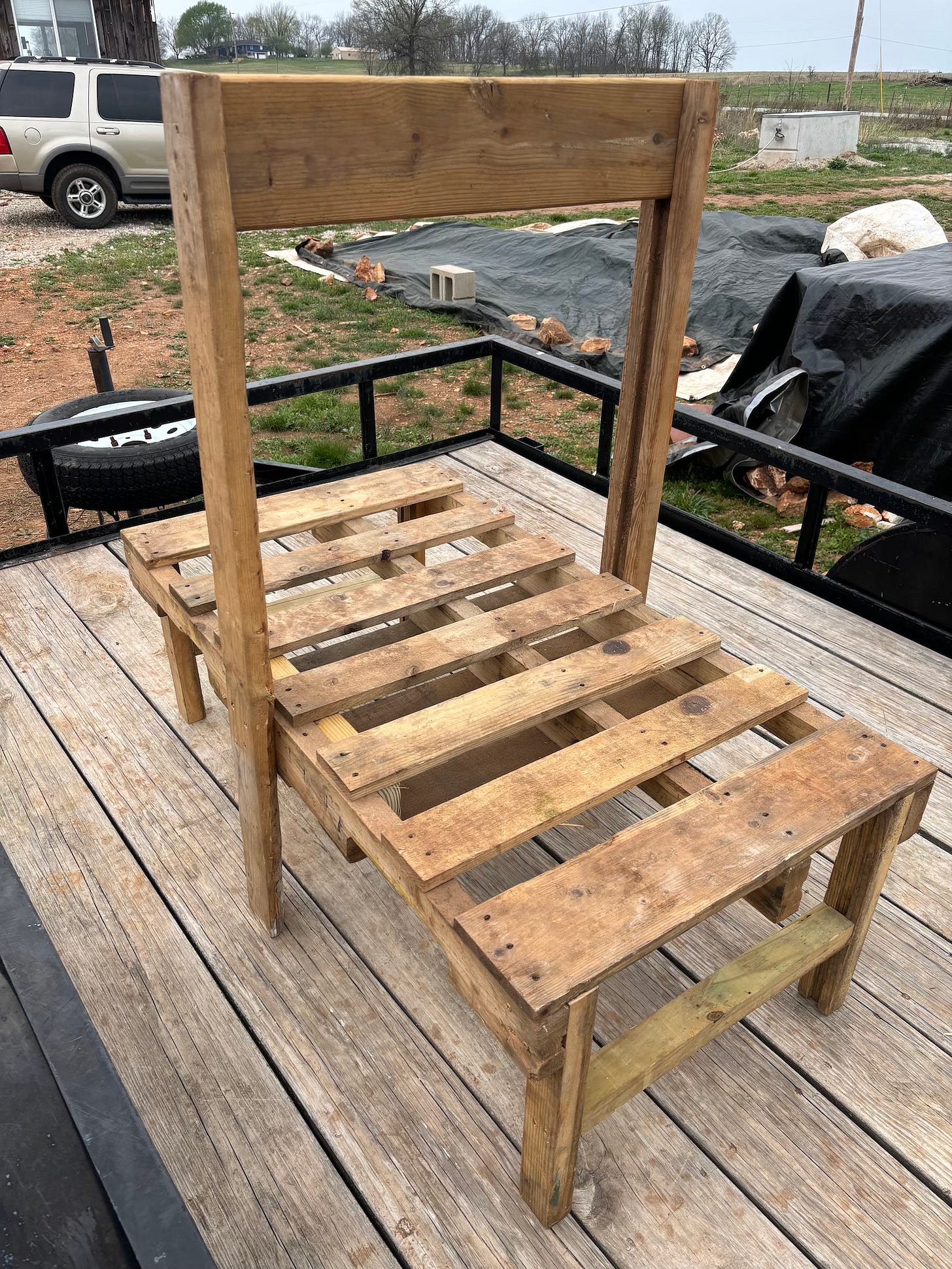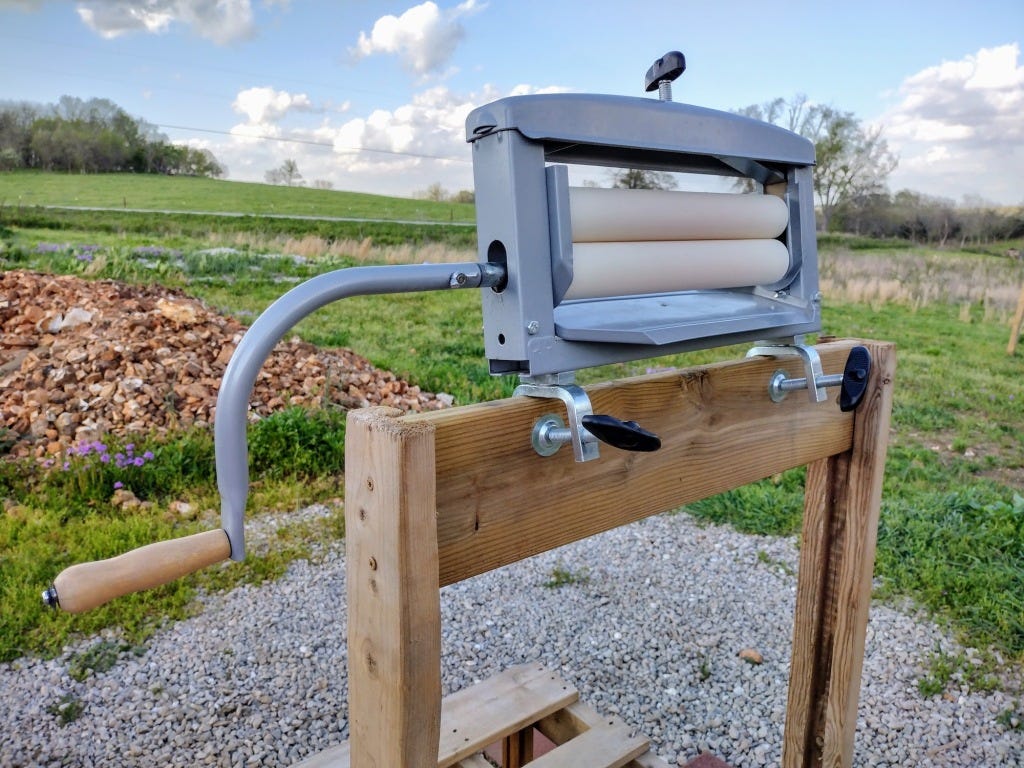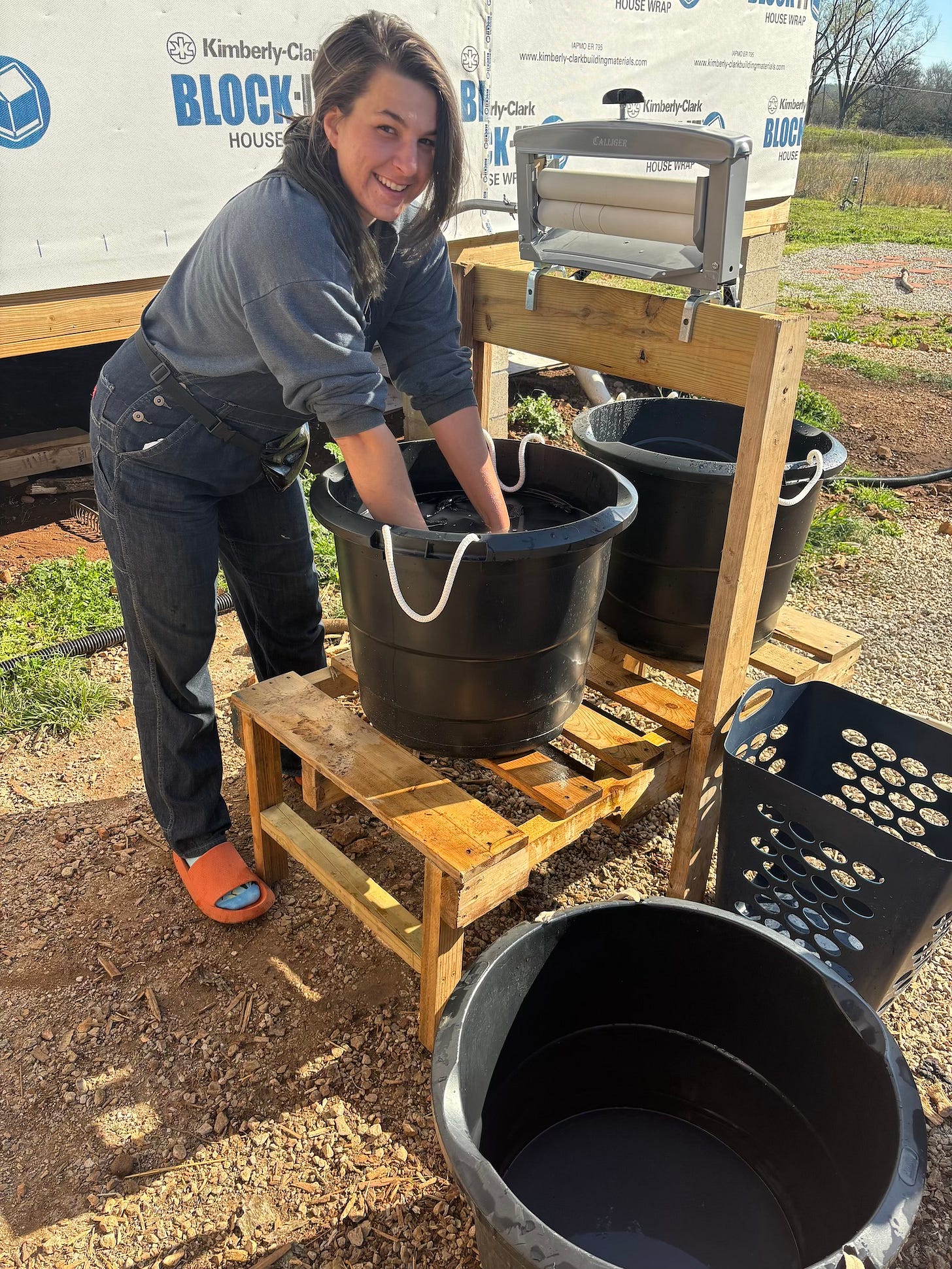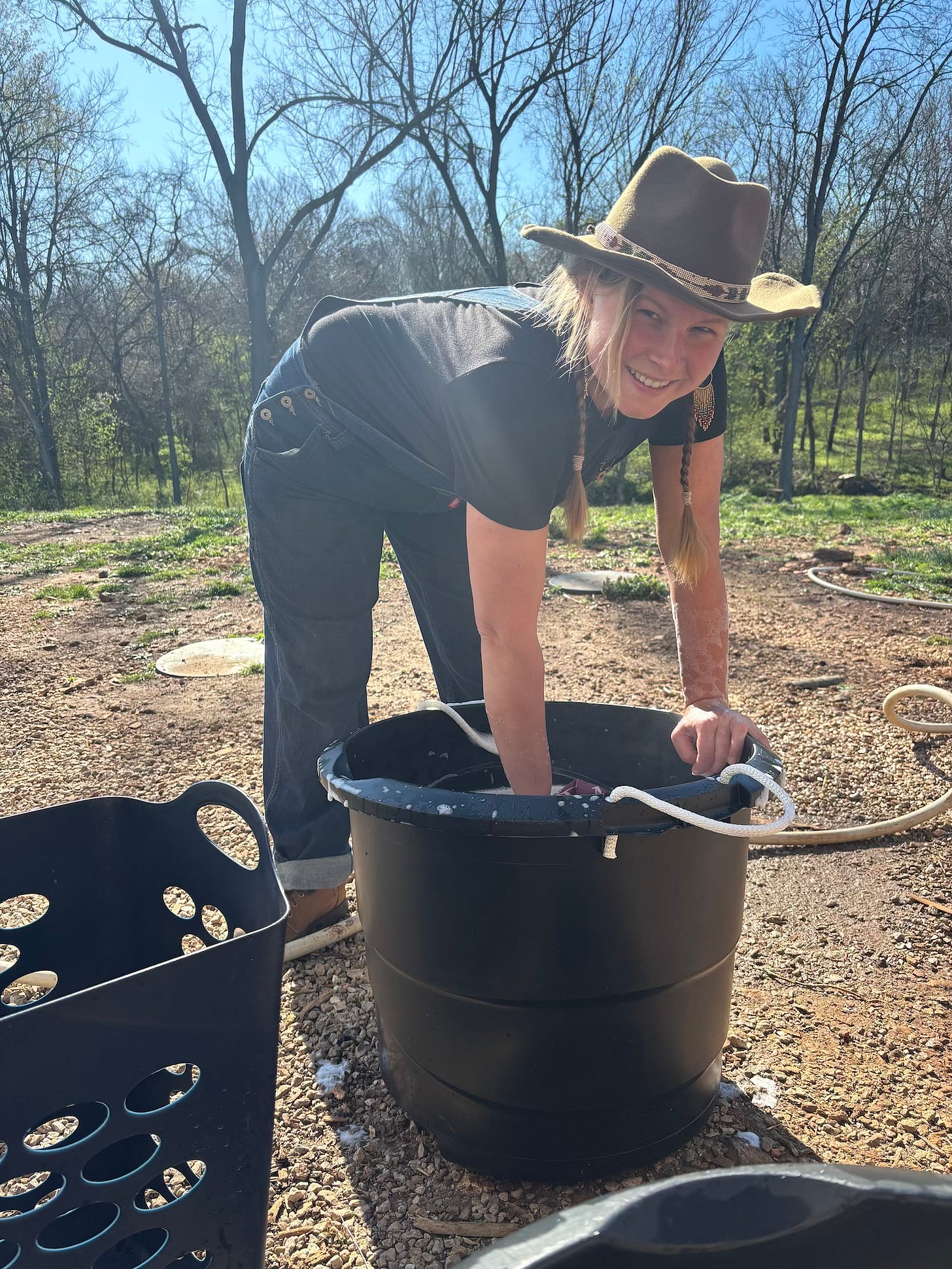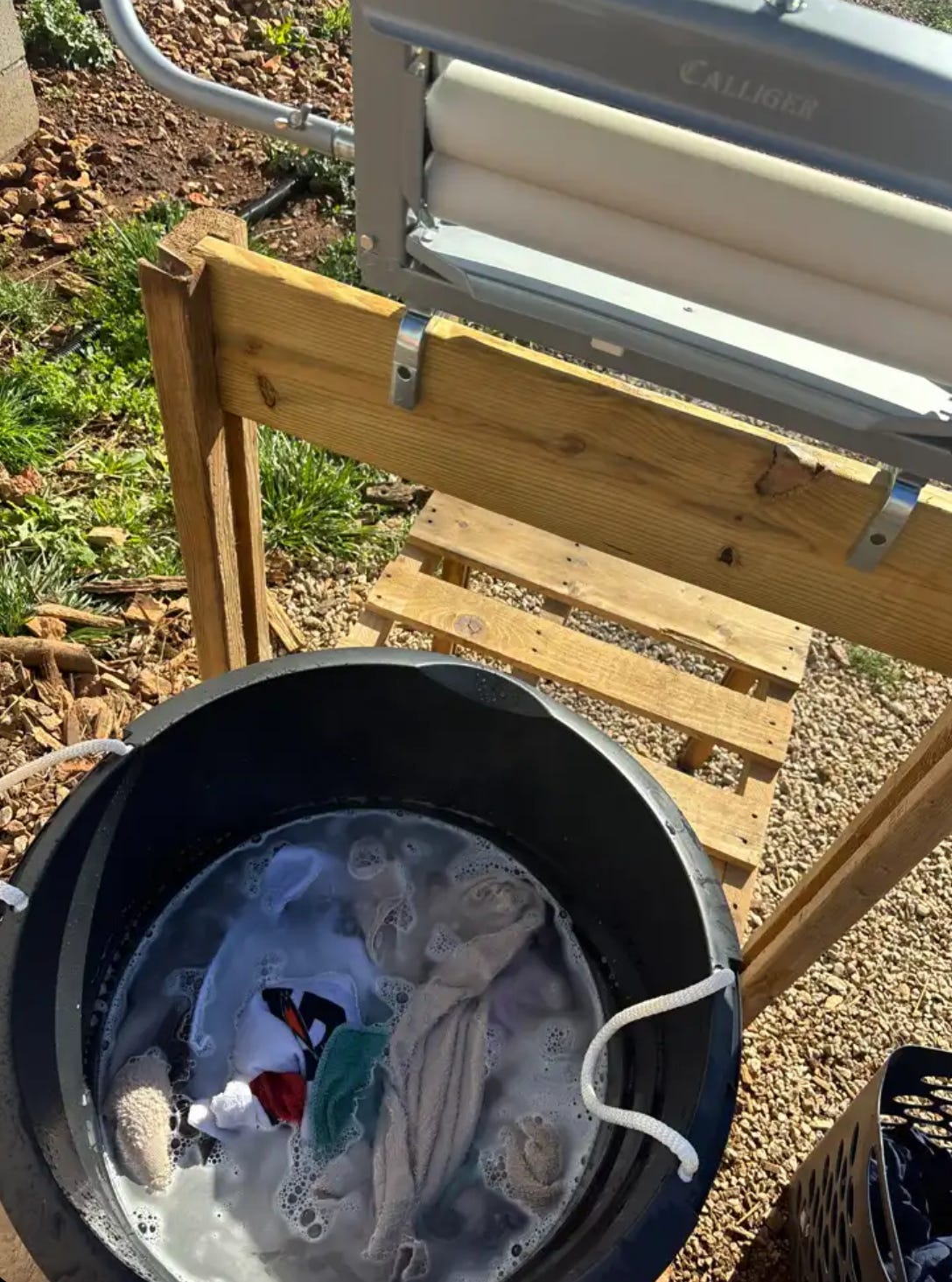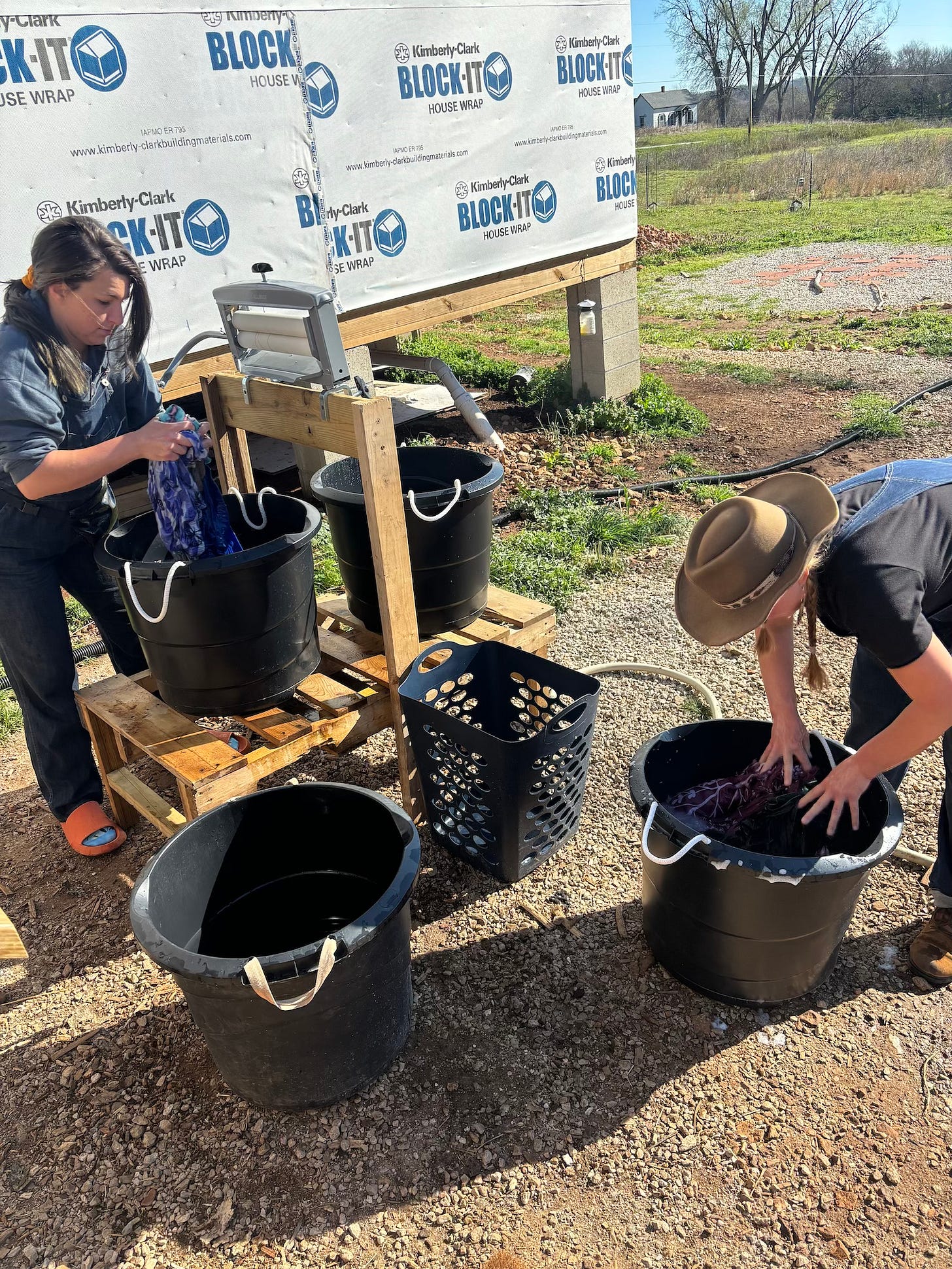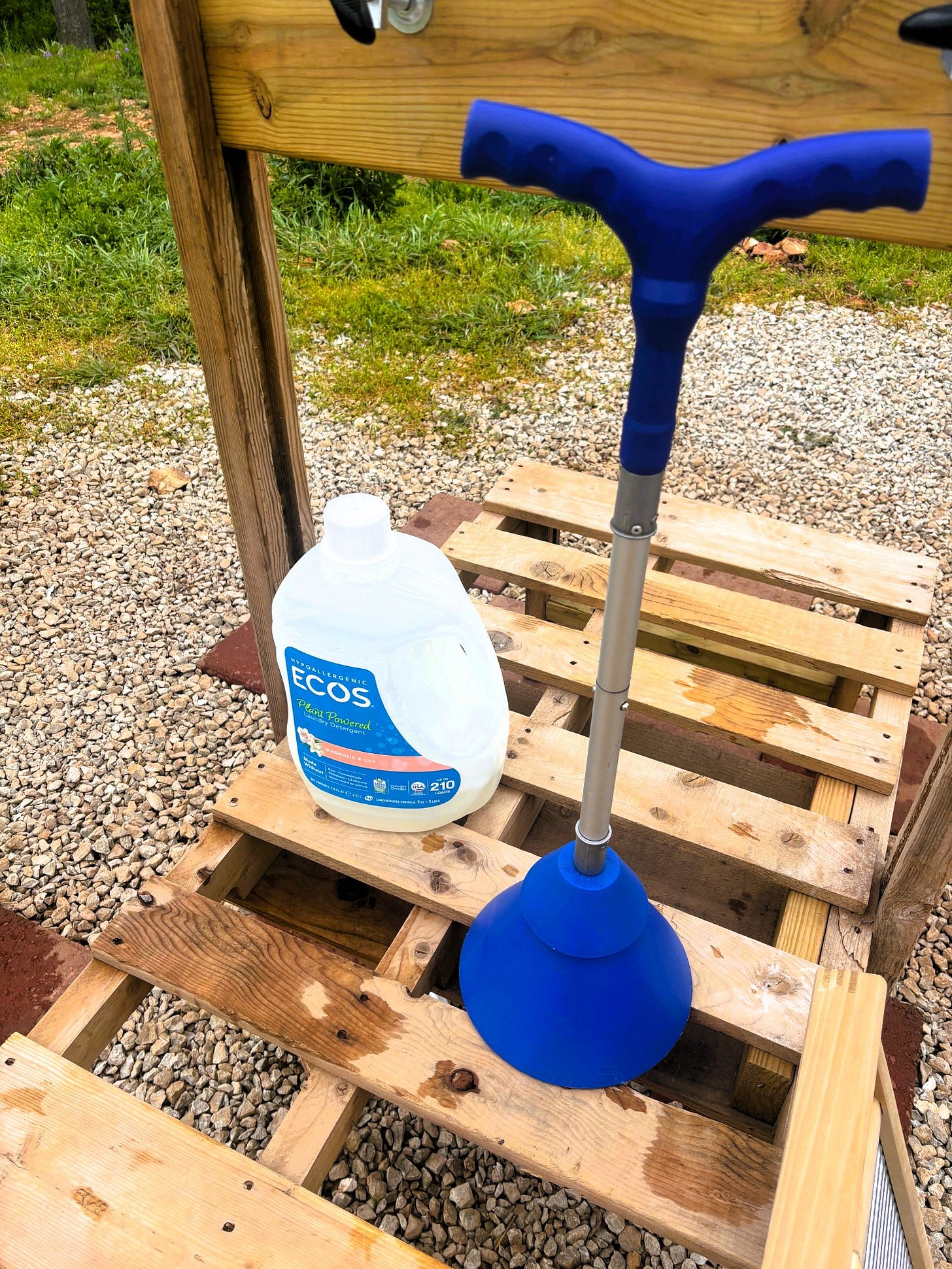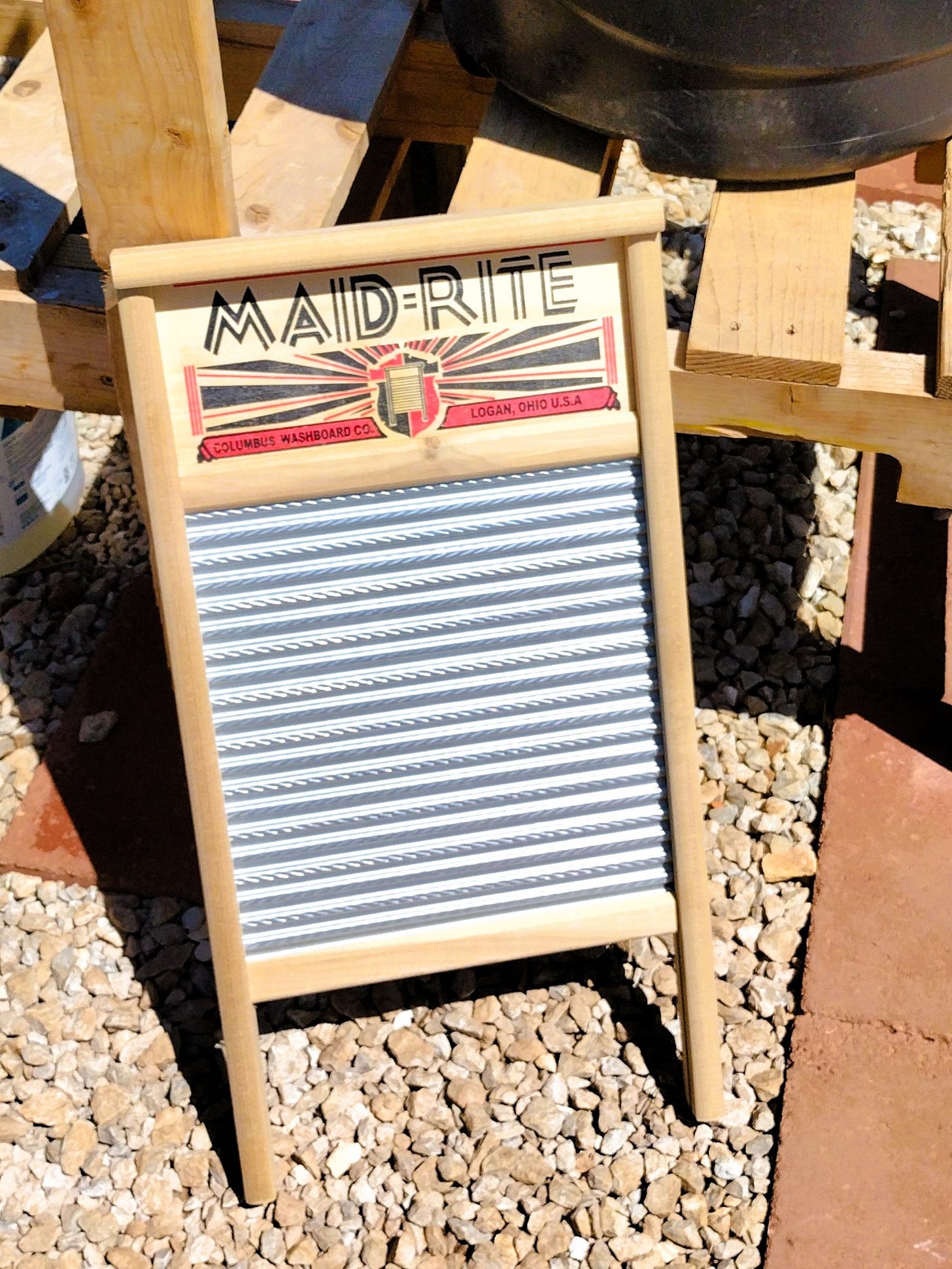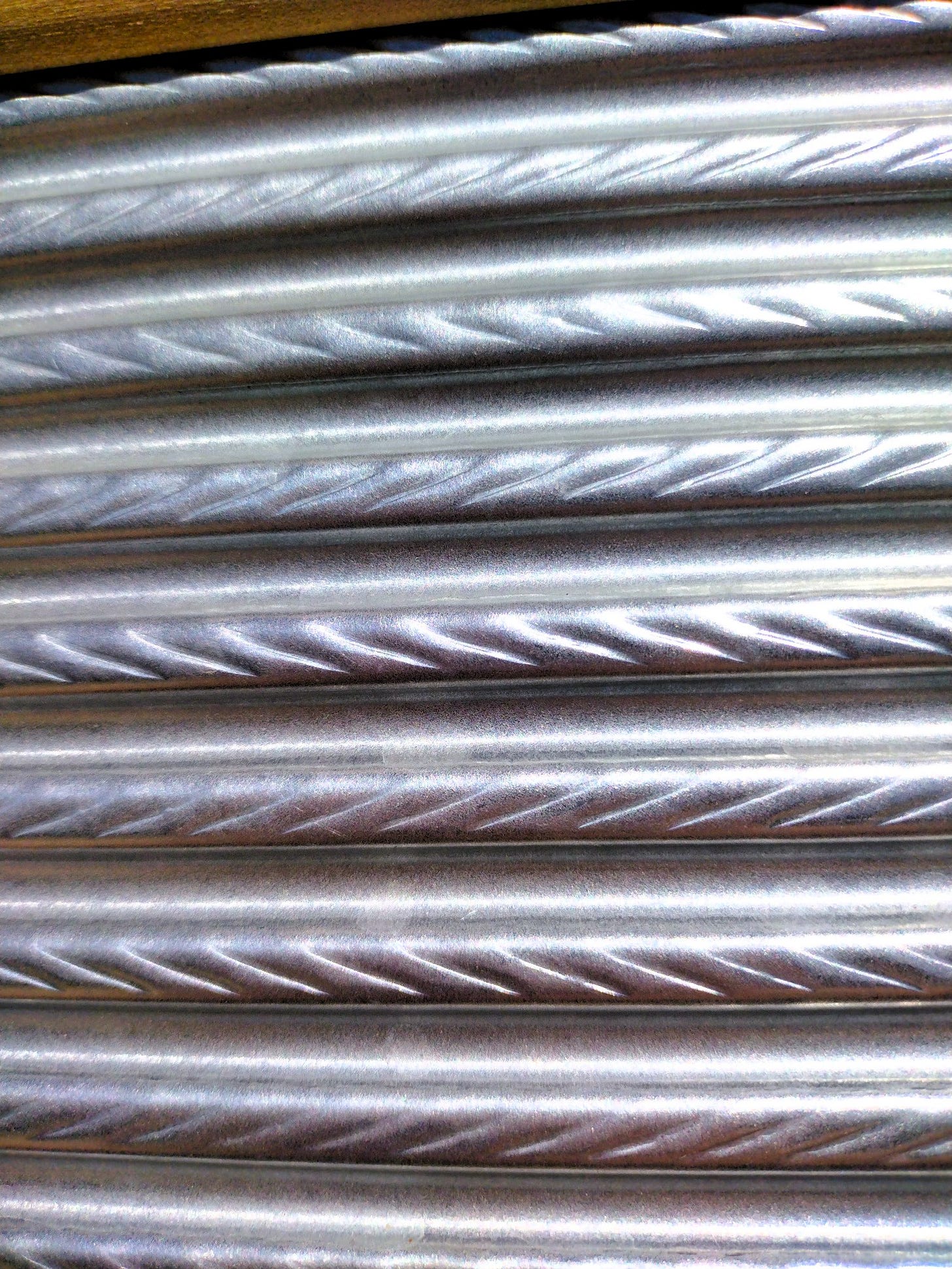Our DIY Rustic Laundry Station
When I was little, I loved reading old books. I would imagine what it was like to be Laura Ingalls or Caddie Woodlawn, wearing calico while running through tangled woods, milking a cow and churning butter by hand, spinning wool and knitting scarves. Part of this fantasy almost always included handwashing laundry in a washtub with a wringer. Here, my imagination played with more recent fact than historical fiction, as I adapted stories I heard from my grandma. Afterall, the clothes wringer wasn't invented until 1888 -- though doubtless both Caddie and Laura would have used one as adults. When I unboxed our new Calliger Clothes Wringer a few weeks ago, I felt almost like a giddy girl again.
It all started when our washing machine stopped working. We knew it was only a matter of time, as we had been using the washer on the covered deck of our wall tent. The humidity had messed with the electronic buttons last year, and then the spin cycle had gotten louder and louder. When it broke, we had to make a decision -- spend a chunk of change to fix the washer (some YouTube research made success seem unlikely) or invest in handwashing equipment. Purchasing a new washer to ruin by using outside was not an option.
After a family discussion, we opted to switch to handwashing. We were fairly certain we couldn't fix the washer, and even if we did, it would only be a matter of time before something else stopped working. We've wanted to invest in a good wringer for years, anyway.
So we scoured blog articles and YouTube videos for ideas. Grace and I opted to convert an old pallet and some scrap wood into an old-fashioned laundry station -- a platform for two tubs with a wringer stand in the middle. We were inspired by MyHomesteadingProject's DIY Off Grid Laundry Station video, and decided we could easily adapt her idea to fit our materials.
We've handwashed clothes for months at a time over the years, but we have never had a proper laundry station or a clothes wringer. As we started using our new system, we were quickly amazed by what a game-changer a clothes wringer is. It made us both faster and more efficient. And -- it saved our poor hands. I've given myself blisters wringing out laundry by hand before. A wringer eliminated this discomfort.
Even though using a wringer feels like a novelty to me, I know it wasn't long ago that they were still standard household items. Maytag was still selling their iconic wringer washers until 1983 -- just a year before I was born. And I can see why -- wringers work great. We have successfully put a variety of clothes, sheets, and duvet covers through the wringer. You have to avoid large buttons and zippers, so you can only do the legs of jeans. It's also not helpful for larger, fluffy items like fleece sweaters and jackets. These we still wring by hand.
Over the next week, we added to our laundry set up. First, we purchased a manual agitator. We use it to swish our laundry around in the washing and rinsing water.
Next, we ordered a washboard. Finding one actually intended for regular laundry use was surprisingly difficult. We finally selected one from the Columbus Washboard Company. It is constructed from wood and galvanized steel -- with the traditional waving and etching for additional scrubbing power. Once it arrived, we picked up a Fells-Naptha laundry bar and went to work. We fell in love with our washboard after one use. We had been scrubbing and swishing as best we could by hand, but we could see the difference when we started using the washboard for dirtier items like socks and work clothes.
It took us a week or so, but we found a good laundry routine. We wash clothes and towels every morning. Once a week, we wash our bedding. We soak our dirtier items overnight. In the morning, we run some wash and rinse water. We start with cleaner items (bath towels, pajamas) then moved to dirtier things (work clothes, socks). If our washing water starts to look dirty, we change it. Or, we add a second washing step. That is the best part of this experience -- the control we have. Lightly dirty items wash quickly, and we can give extra attention to dirtier pieces.
A few weeks into this process, we love our washing station. We've noticed a difference in our laundry -- it looks cleaner and brighter. It smells great. As a fringe benefit, we are toning our arms in places we didn't know we could tone.
Will we handwash exclusively in the future? I don't think so. We miss the spin cycle for fluffy coats and jackets. Bedding is doable but quite the project, taking us about half a day. While the wringer can handle sheets and thin duvet covers, thicker blankets would not fit. And as of this week, we have realized wringers can be cantankerous. The adhesive on one of the rollers seems to be failing, despite us following the instructions to the letter. We are exchanging it, hoping this failure is a fluke. Still, I can see myself handwashing most of my laundry in the future -- then using a shared family washing machine for large items like coats and bedding.
For now, handwashing is the best option for us. Several of us have even found the process satisfying -- we have enjoyed the peaceful repetition of the task, soaking in the sunshine and springtime weather as we work. These sorts of jobs make me wonder about the contemporary interest in mindfulness and meditation. While I think there is a place for such practices, I wonder if the loss of quiet, repetitive manual labor has deprived us of built-in moments of contemplation. I often think about this when ironing clothes for church. I hadn't used an iron for years before moving out here, opting to throw things in the dryer to get rid of wrinkles. Now, its one of my favorite chores -- providing the opportunity to slow down and think while still being productive. Handwashing laundry is the same way -- a reprieve in an often harried existence. While I will enjoy having a washing machine again one day, I know I will miss these moments of sun and suds and water.




